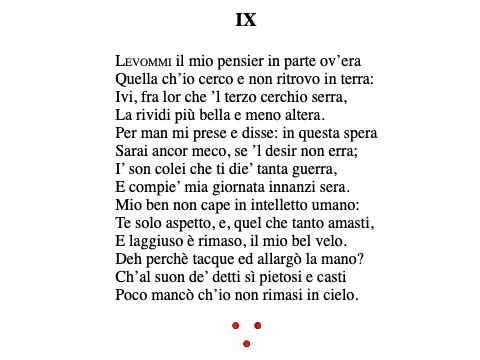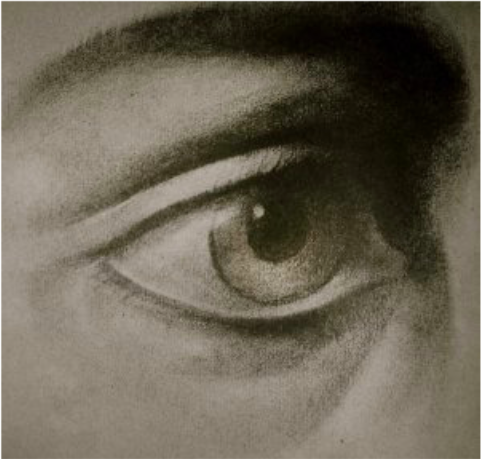The Slippery Sonnet
An essay on the greatest poetic form yet invented

The sonnet is surprisingly slippery to define. Normally, of course, the sonnet is fourteen lines of iambic pentameter rhyming in some alternating fashion. This is all well — right up to the point that it’s well no longer.
Any number of sonnets throughout history and into the present day consist of more than fourteen lines. Perhaps the most famous of these is the eighteen-line sonnet from Act 1, scene 5 of Romeo and Juliet, which William Shakespeare wrote in dialogue:
ROMEO:
If I profane with my unworthiest hand
This holy shrine, the gentle fine is this:
My lips, two blushing pilgrims, ready stand
To smooth that rough touch with a tender kiss.JULIET:
Good pilgrim, you do wrong your hand too much,
Which mannerly devotion shows in this;
For saints have hands that pilgrims’ hands do touch,
And palm to palm is holy palmers’ kiss.ROMEO: Have not saints lips, and holy palmers too?
JULIET: Ay, pilgrim, lips that they must use in prayer.
ROMEO: Oh, then, dear saint, let lips do what hands do;
They pray, grant thou, lest faith turn to despair.JULIET: Saints do not move, though grant for prayers’ sake.
ROMEO: Then move not, while my prayer’s effect I take.
Thus from my lips, by thine, my sin is purged.JULIET: Then have my lips the sin that they have took.
ROMEO: Sin from my lips? O trespass sweetly urged!
Give me my sin again.JULIET: You kiss by the book.
[Note of interest: this is where the phrase “by the book” originated.]
There’s also Anthony Hecht’s little-known “Double Sonnet,” a good but not great poem written by a poet I much admire — a “flawed poem,” as Anthony Hecht himself once expressed it — two lines of which exerted an influence upon a non-sonnet I wrote, years ago, about my dear brother:

Elizabethans like Christopher Marlowe and William Shakespeare — by far the two greatest writers of the Elizabethan era — used the word “sonnet” somewhat indiscriminately.
Why?
Because the Elizabethans took the literal meaning of the word “sonnet” which they got from the Italians, who invented the form. In Italian, the word is sonnetto.
Literally translated, sonnetto means “little song.”
The following questions can legitimately be asked:
What does any of it really matter?
Why need anyone concern herself or himself with the sonnet’s precise definition?
My answer is this:
The sonnet remains the greatest poetic form yet invented, in all known history. In fact it has nothing close to a real equal. The sonnet’s persistent use and absolute refusal to go out of fashion proves this point in a mathematical way.
What accounts for this?
What makes the Italian-Petrarchan sonnet — from which the English-Shakespearean sonnet derives — so spectacularly special?
Why for over eight unbroken centuries has the Petrarchan persisted with incomparable durability, immutability, and popularity, without a single generation wherein it wasn’t in strong use?
Why is there no other poetic form in history that comes anywhere close to this sort of longevity — longevity in terms of both its usage by poets (of all nationalities) and also in terms of its popularity among readers (of all nationalities)?
Solving the enigma of the sonnet’s rarified endurance, isolating and identifying its defining characteristics — these things are important because the sonnet’s value to human psychology and aesthetics is incalculable.
Sonnets have for eight straight centuries, all across the world, influenced the way humanity thinks about the universe and human consciousness.
Such is the power of the written word. Such is the power of poetry. Such is the power of the sonnet.
Poems consisting of only a single stanza are not at all uncommon, and among them are some of the best and most artistically satisfying poems in English or any language. Yet there are limitations to such brevity, and these limitations are obvious.
A poem of only one short stanza cannot be much more than an epigram or a single lyric cry.
The fourteen-line standard of the sonnet, however, offers room for the full development of a single and often remarkably subtle, imaginative, and complete idea. A sonnet is large enough to allow the poet to present a situation and then interpret it — or to move in one direction and then to surprise readers by reversing that direction completely. There is, in other words, a deep and inherent symmetry to the sonnet form, and this, I’m convinced, is the single greatest reason for the sonnet’s incomparable durability: its symmetry combined with its concision.
Please also note in the first sentence of the paragraph directly above the phrase “fourteen-line standard of the sonnet.” Fourteen lines are the standard of the sonnet, but this standard is a standard from which poets can and often do deviate. Yet it does remain the standard. This is the first definitional crux.
All poetic forms, the sonnet included, are in a certain sense straightjackets.
All poetic forms are also artificial — meaning: they’re invented.
But none of this means that poetic forms are pretentious or “false to experience,” as the post-postmodern professors and critics are so fond of describing it. It only means that they’re highly formal and ultimately arbitrary in their specific — i.e. exact — structure. And yet if the sonnet weren’t in existence, you may be certain that some other poetic form of about fourteen lines of alternating rhyme would have become equally famous and continuously used — because the structure of the human mind is logical and as such seeks out organization, order, concision, clarity. This is healthy and it’s good. It’s also arrantly human.
Sonnets fulfill this human drive and need.
The sonnet is a straightjacket that forces the writer to stay focused and fixed while at the same time allowing her ample room to maneuver, to express herself in beautiful and poignant ways, and to do it with concision.
Sonnets are pleasurable to read, and they’re pleasurable to write.
A form capable of giving a single idea or a single aspect of experience vivid definition in one or two single verse paragraphs (known in poetry as “stanzas”) is clearly logical, desirable, even necessary.
This same thing can be said, though in a different context, about the paragraph itself, and even the sentence itself.
The period in the form of a little dot at the end of sentence to denote the end of a complete thought and the double-space between a single block of writing to indicate a paragraph break are both ultimately invented and arbitrary — insofar as it needn’t have been a little dot or a line space to indicate the things that the period and the paragraph break indicate. But if it weren’t either of these two things, it would’ve been something else which indicate the exact same thing. Why? Because the structure of the human mind is logical and seeks out organization, order, concision, and clarity. This is what the period and the paragraph break fulfill.
It’s entirely simple (if not entirely plausible) to make a very narrow definition of the sonnet form.
For centuries, many good writers have insisted that merely to call a fourteen-line rhyming iambic pentameter poem a sonnet is not to make it a sonnet. These good writers point out, quite cogently, that fourteen iambic pentameter lines of alternating rhymes act upon the human mind in a different and somehow more sophisticated manner than any variant of this pattern. Here, please note, the definitional distinction I’m making is the alternation of rhyme pattern. The definitional distinction is not iambic pentameter.
Many readers will take issue with that last sentence, I’m well aware.
It’s not my point or purpose here to argue stresses and syllables — that’s for another article.
I’ll only reply by posting the following sonnet, which was written by a skillful and clever poet named Brad Leithauser. His sonnet — titled “Post-Coitum Tristesse: A Sonnet” — is certainly not iambic pentameter, containing as it does only one word per line, but it is a sonnet:

A more comprehensive sonnet definition is defensible. It’s a definition that avoids more difficulties than it raises. The law of parsimony — sometimes still called Occam’s razor — is, let us always remember, the golden law. It applies every bit as much to the sonnet as to everything else in the universe.
There are these two basic sonnet forms — and this has been the case since the early 1500's:
There’s the Italian-Petrarchan sonnet and the English-Shakespearean sonnet.
The term “Italian sonnet” is synonymous with the term “Petrarchan sonnet.” They’re perfectly interchangeable.
The term “English sonnet” is synonymous with the term “Shakespearean sonnet.” They’re perfectly interchangeable.
The Italian-Petrarchan sonnet was first used by Dante (1265–1321) but is named after Francesco Petrarch (1304–1374) for his excellence with the form. Petrarch unleashed this form upon the world in his two incredible sonnet books, which were inspired by a noble lady named Laura. These two books are titled Sonnetto in Vita and Sonnetto in Morte: i.e. Sonnets for the Living and Sonnets for the Dead.
Like all formal poetry, the sonnets of Petrach don’t translate well.
The Italian-Petrarchan sonnet’s first eight lines — the octet (or, less frequently, the octave) — follow a strict ABBAABBA rhyme-pattern. The scheme of the second section — the sestet (the final six lines) — will sometime vary, but it’s usually patterned CDCDCD.
In addition to this, Italian-Petrarchan sonnets contain, both by tradition and definition, a dramatic shift, known in Italian as a volta (i.e. turn), between the octet and sestet. This dramatic shift, or volta, is often but not always demarcated by a double-space after the octet. The double-space makes it a two-stanza sonnet.
In prose, stanzas are called paragraphs.
The first indisputable English sonnets were written, some two centuries after Dante and Petrarch, by Sir Thomas Wyatt (1503–1542), who usually, though not always, used the Italian-Petrarchan sonnet for his model.
The first definitively known use of what we now call the English-Shakespearean sonnet was done by one Henry Howard, Earl of Surrey (1517–1547), but is named after William Shakespeare (1564–1616) for his excellence with the form. Its rhyme scheme is different from the Italian-Petrarchan — and this, too, is a definitional crux: the English-Shakespearean sonnet consists of three quatrains rhyming ABAB, CDCD, EFEF, and concludes with a couplet: GG.
The English-Shakespearean sonnet doesn’t traditionally contain a volta after the first eight lines. Yet Shakespeare (among others) clearly delighted in incorporating this stage-like element into any number of his 154 total sonnets — including many of his very best.
Line-spacing — or what grammarians, lexicographers, typesetters, and other specialists call lineation — isn’t a definitional part of any sonnet, whether Petrarchan or Shakespearean. Sonnet writers are at any place in the poem free to choose iambic pentameter or not, single-spaces or double-spaces (or triple spaces), as they are also free to choose ornament breaks or not.
If — and only if — the poem contains fourteen total lines with one of the two rhyme schemes described above, no matter how odd the poem may appear upon the page, it’s by definition either an Italian-Petrarchan sonnet or an English-Shakespearean sonnet, the determination of which rests solely upon the sonnet’s alternating rhyme scheme. That is the final definitional crux.
If the sonnet contains more (or less) than fourteen lines, it must be qualified as such: e.g. “eighteen-line sonnet” or “twelve-line sonnet” or “double sonnet” — because it deviates from the standard.
And this last thing is why I emphasize above the term “fourteen-line standard” as the first definitional crux: because the fourteen-line standard must always be referred to, either implicitly or explicitly, in defining those sonnets which deviate from it. If this weren’t the case, there would be no good way to classify them — and certainly not as sonnets.
That, then, is the full criteria — the full definition — of the greatest poetic form the world has ever known: fourteen lines of an alternating rhyme scheme, any deviation from which requires specification — as in “unrhymed sixteen-line sonnet.”
When, however, the deviation from the standard becomes what I’ll here call over-deviant — as, in my opinion, is the case with my hypothetical “unrhymed sixteen-line sonnet” — or when it’s in some other way qualified out of all sensible proportion, the poem at this point crosses over into a different poetic form which by any rational standard can no longer be called a sonnet: because it’s at this point that the form has transmuted into something too far removed from the standard, and is thus no longer the same poetic form.
It is, in other words, at that point no longer a sonnet, though it may very well be a beautiful little song.










